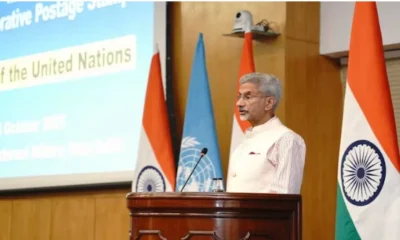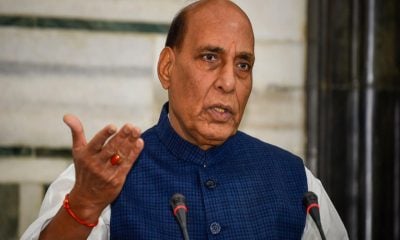India has steadily slipped in ranking on United Nation’s World Happiness Index.
India ranked 122nd in 2017, and 118th in 2016, meaning it dropped four places in the 2017 World Happiness Report and fell a further 11 places in the 2018 report to rank a low 133 on the list of 156 countries monitored by the United Nations’ Sustainable Development Solutions Network for its annual ‘joy’ report.
While Indians are apparently getting unhappier by the year, their not-so-well-off neighbours in Pakistan are becoming more joyful, according to the UN ranking.
By comparison, terror-ravaged Pakistan, which was already ‘happier’ than India in the 2017 rankings, is shown as being even happier in the 2018 rankings. It’s on number 75, up five spots from last year.
And it is not just Pakistan. India was behind all its neighbours and the majority of South Asian Association for Regional Cooperation (SAARC) nations, apart from war-ravaged Afghanistan, that stood at 145.
Among the eight SAARC nations, Pakistan was at 75 (as mentioned above), Bhutan at 97, Nepal at 101, Bangladesh at 115 while Sri Lanka was ranked 116. Maldives did not figure in the World Happiness Report.
Even state-controlled China is happier than India.
The World Happiness Report released on Wednesday, March 14 – ahead of the International Day of Happiness on March 20 – put Finland at the top among 156 countries ranked by happiness levels, based on factors such as life expectancy, social support and corruption.
Finland has risen from fifth place last year to oust Norway from the top spot. In fact, Nordic countries have consistently dominated the top 10. This year the top ten are: Finland, Norway, Denmark, Iceland, Switzerland, Netherlands, Canada, New Zealand, Sweden and Australia.
Taking the harsh, dark winters in their stride, Finns said access to nature, safety, childcare, good schools and free healthcare were among the best things about in their country, said media reports quoting people living in Finland.
Sub-Saharan African nations continued to be the least happy in the world. The bottom five included Burundi, Central African Republic, South Sudan, Tanzania, and West Asia’s Yemen. These countries ranked high on ‘dystopia’ as per the UN.
UN Sustainable Development Solutions Network’s (SDSN) report is based on factors like per capita GDP, social support systems, life expectancy, social freedom, corruption levels and general health.
India underperformed in ‘freedom to make life choices’ and ‘generosity’, according to the index. The 2018 WHR observed Indians were increasingly migrating to other countries. “There were big flows from the Indian sub-continent to the Gulf States,” it stated.
Last year also witnessed the increasing mixing of Indians and Europeans in Latin America. According to WHR, “many male and female Indians enjoy high social status” in these regions.
The United States came in at 18th, down from 14th place last year. Britain was 19th and the United Arab Emirates 20th.
Serious academics have long been calling for more testing about people’s emotional well-being, especially in the United States. In 2013, the National Academy of Sciences issued a report recommending that federal statistics and surveys, which normally deal with income, spending, health and housing, include a few extra questions on happiness because it would lead to better policy that affects people’s lives.
One chapter of the 170-page report is dedicated to emerging health problems such as obesity, depression and the opioid crisis, particularly in the United States where the prevalence of all three has grown faster than in most other countries. While its per capita income is on the rise, happiness has been dented by weakening social support, and a perception of increasing government corruption.
For the first time since it was started in 2012, the report, which uses a variety of polling organizations, official figures and research methods, ranked the happiness of foreign-born immigrants in 117 countries. Finland took top honours in that category too, giving the country a statistical double-gold status.
The foreign-born were least happy in Syria, which has been mired in civil war for seven years. “The most striking finding of the report is the remarkable consistency between the happiness of immigrants and the locally born,” said Professor John Helliwell of Canada’s University of British Columbia.
“Although immigrants come from countries with very different levels of happiness, their reported life evaluations converge towards those of other residents in their new countries,” he said. “Those who move to happier countries gain, while those who move to less happy countries lose.”
The United States was 11th in the first index and has never been in the Top 10. To explain its fall to 18th, the report’s authors cited several factors.
While U.S. income per capita has increased markedly over the last half century, happiness has been hit by weakened social support networks, a perceived rise in corruption in government and business and declining confidence in public institutions.
“The U.S. is in the midst of a complex and worsening public health crisis, involving epidemics of obesity, opioid addiction, and major depressive disorder that are all remarkable by global standards,” the report said.
It added that the “sociopolitical system” in the United States produces more income inequality – a major contributing factor to unhappiness – than other countries with comparatively high incomes.
“We obviously have a social crisis in the United States: more inequality, less trust, less confidence in government,” the head of the SDSN, Professor Jeffrey Sachs of New York’s Columbia University, told Reuters as the report was launched at the Vatican’s Pontifical Academy of Sciences.
“It’s pretty stark right now. The signs are not good for the U.S. It is getting richer and richer but not getting happier.”
Asked how the current political situation in the United States could affect future happiness reports, Sachs said:
“Time will tell, but I would say that in general that when confidence in government is low, when perceptions of corruption are high, inequality is high and health conditions are worsening … that is not conducive to good feelings.”
There are lessons for India there.


 India News23 hours ago
India News23 hours ago
 India News16 hours ago
India News16 hours ago
 India News21 hours ago
India News21 hours ago
 Cricket news21 hours ago
Cricket news21 hours ago
 India News21 hours ago
India News21 hours ago
 India News16 hours ago
India News16 hours ago
 Latest world news16 hours ago
Latest world news16 hours ago















